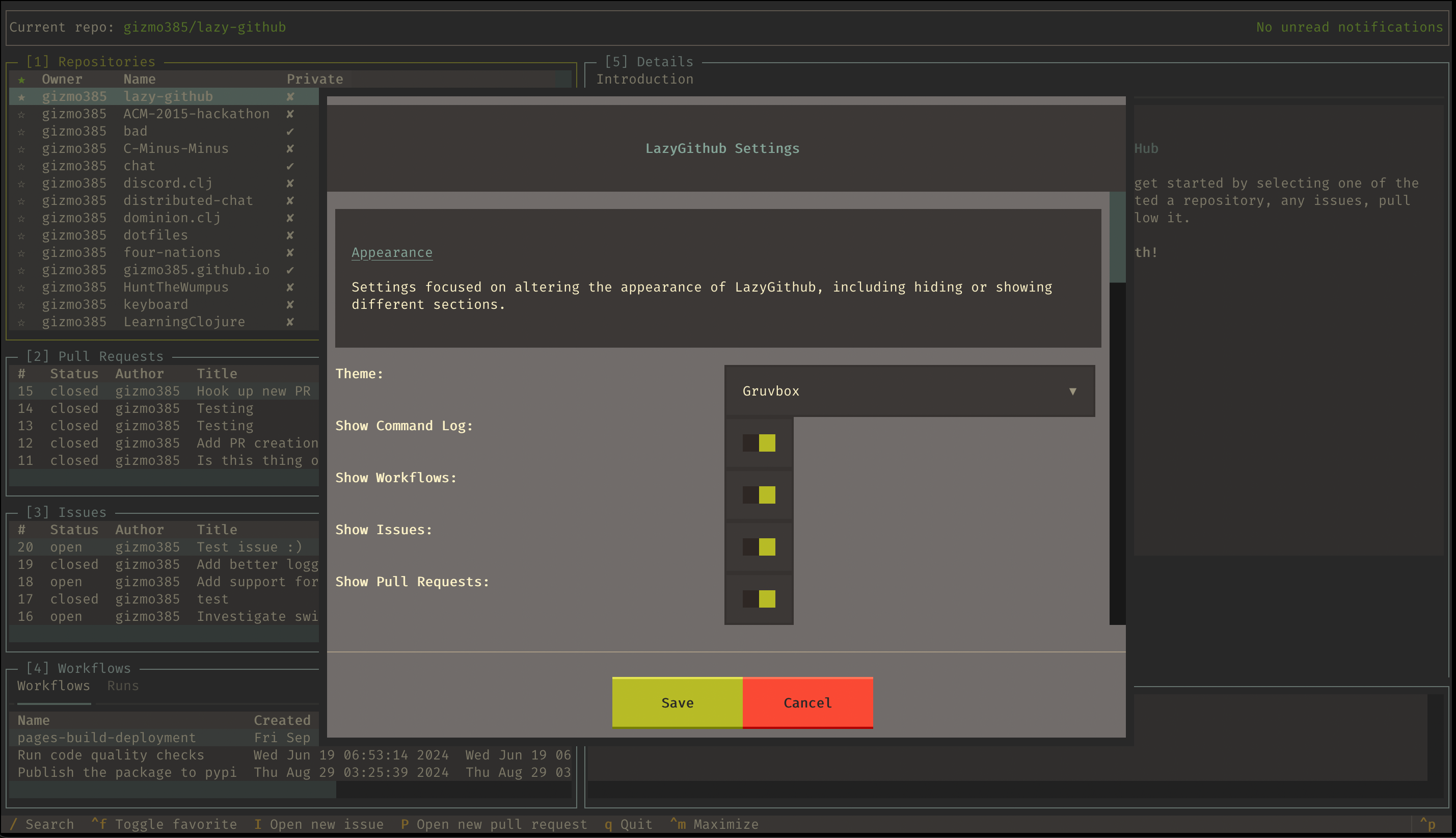LazyGithub is a terminal UI client for interacting with GitHub. It draws heavy inspiration from the lazygit project and uses Textual to drive the terminal UI interactions.
If you have the Github CLI installed, you can install LazyGithub as an extension with gh extension install gizmo385/gh-lazy and then running gh lazy to run it.
You can run the most recently built version by installing it from PyPI. If you have uv installed, you can do that easily with uvx lazy-github.
When you first start LazyGithub, you will be prompted with a device login code and a link to GitHub where you will be able to authenticate the app against your account. This allows the app to act on your behalf and is necessary for LazyGithub to function.
Currently, it supports the following:
- Listing the repositories associated with your account
- Listing the issues, pull requests, and actions on your repositories
- Listing the details, diff, and reviews on any of those pull requests
- Detailed issue and pull request views, including conversation participation
If you wish to run it from a local clone of the repository, you can do so by running the ./start.sh located in the root of the repo.
LazyGithub supports a number of customization options, all of which are stored in $HOME/.config/lazy-github/config.json.
These can be edited manually via changing the config or by opening the settings management UI within LazyGithub. That UI
can be accessed via the command pallete (CMD+p) and then searching for settings.



